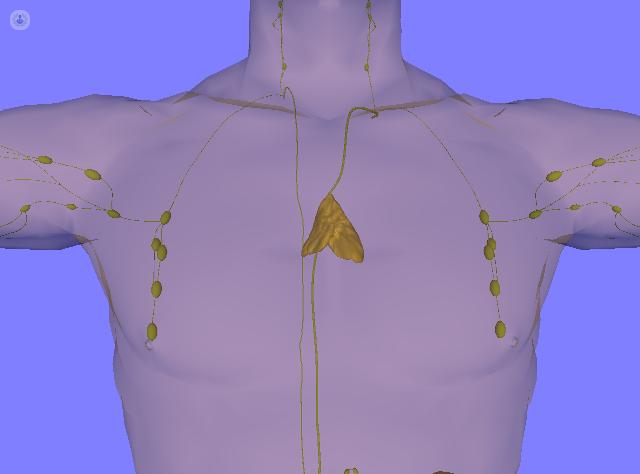What is the thymus gland and what does it do in the body?
Written in association with:The thymus is a gland organ of the immune system formed by T lymphocytes, which are cells responsible for cellular immunity, responding by activating certain cells to fight infections. The response of the immune system is very important in haematology.
The thymus: what it is and its purpose
The thymus is an organ of the immune system, in the form of a gland. Its name comes from the ancient Greek word, thymos, meaning "heart or soul", possibly because of its location in the chest, "near where subjective desires and emotions are felt."
Galen (a prominent Greek physician) was the first to realise that the size of this organ changed throughout life. Initially, it was considered a "cemetery of lymphocytes", without functional value. However, its importance in the immune system was discovered in 1961 by Jacques Millar. By surgically extracting the thymus of a 3-day-old mouse he observed the subsequent deficiency in the quantity of lymphocytes, which were later called T cells, a name that indicates cells that are derived from the thymus.
The structure of the thymus gland
The thymus is a two-lobed organ found in the upper chest cavity, partially within the neck region. It is located above the cardiac pericardium, in front of the aorta, between the lungs, below the thyroid gland and behind the sternum. The thymus has a thin cover called the capsule. It consists of three types of cells:
- Epithelial cells: compact cells that give the thymus shape and structure.
- Lymphocytes, immune cells that protect against infections and stimulate immune response.
- Kulchitsky cells, which are hormone releasing cells.
The lobes are made up of many smaller divisions called lobules. A lobe consists of an inner area called marrow, and a peripheral region called cortex:
- Region of the cortex: contains immature T lymphocytes, cells that do not yet have the immunological ability to distinguish foreign cells.
- Marrow region: contains mature T lymphocytes. These cells have the ability to identify foreign cells, through their T-cell receptor. T lymphocytes originate from the hematopoietic stem cells of the bone marrow and mature in the thymus.

The function of the thymus
The main function of the thymus is to mature the T lymphocytes. Once mature, they leave the thymus and are transported through the blood to the lymph nodes and spleen.
It should be noted that T lymphocytes are cells of the immune system responsible for cellular immunity, which consists of an immune response that triggers the activation of certain immune cells to fight infection. Its cell membrane contains a series of proteins capable of recognizing different types of allergens (substances that produce an immune response). Lys T lymphocytes are differentiated into 3 types, in the thymus:
- Cytotoxic T cells. They bind directly to the pathogen's antigens and remove it.
- Auxiliary T cells. They precipitate antibody production by B lymphocytes and also produce substances that activate other T cells.
- Regulatory T cells. These are also called suppressor T cells because they suppress the response of B cells and other T cells to the antigens.
The thymus produces a series of proteins with hormonal functions that help mature and differentiate T lymphocytes. Some of these hormones, such as tymopoetin and timulin, induce the differentiation in T lymphocytes, improving their immune function. In fact, Timusin increases immune response.
The thymus is also a hormonal gland that stimulates other glands. An example is the hypothalamic-pituitary axis, which stimulates the release of growth hormones, luteinising hormone, prolactin and gonadotropin, and also stimulates the adrenal gland to produce ACTH (adrenocorticotropic hormone).
The Thymus’ immunological importance in haematology
The response of the immune system is of vital importance in haematology for the rejection of transplants of hematopoietic progenitors, such as graft firing, acute or hyperacute rejection, and "graft versus host" disease.
Hematopoietic stem cell transplants are used to replenish the bone marrow (the place where all blood components originate) depleted by aggressive treatments of radiotherapy or chemotherapy, and are the only option of curative treatment in malignant tumoural haemopathies such as leukaemia, lymphoma, myeloma or aplasia.


